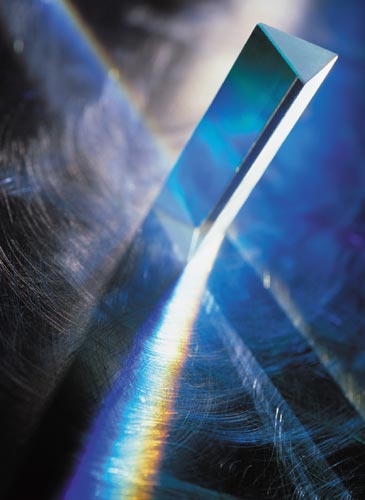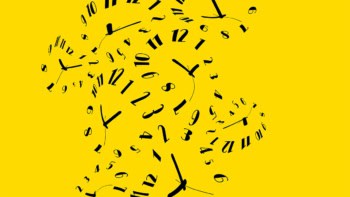The Prism and the Pendulum: The Ten Most Beautiful Experiments in Science
Robert P Crease
2003 Random House 272pp $23.95pb
Robert Crease’s book is a bargain: you get two good things for the price of one. First, you have a stimulating series of essays about the history of science, each of which describes a landmark scientific experiment in its proper context. Second, the book provides a captivating analysis of a neglected and interesting issue – that of beauty in science.
All scientists like certain experiments more than others. A few experiments can even stir strong feelings in us. Crease explains why this is, or at least makes a reasonable effort to do so. The results are provocative, challenging and never boring. Once you have started the book, it is difficult to put down.
Unfortunately, my love affair with this work got off to a bad start when I read the subtitle, which I utterly dislike. “The ten most beautiful experiments in science” reminds me of one of those cheap CDs advertising “the 50 most beautiful love songs of all time” or of a tacky contest for “the most beautiful legs”. All things considered, “10 beautiful experiments in science” would have been more tasteful.
Happily, the commercially oriented subtitle is quickly forgotten when one gets to the core of the beauty issue. What, the author wants to know, makes an experiment “beautiful”? Crease proposes three criteria: depth, efficiency and definitiveness. A beautiful experiment should “show something deep about the world in a way that transforms our understanding of it”, be “efficiently arranged” and “reveal its results without need for further generalization or inferences”. One may not completely agree with these criteria, but at least they provide a starting point for analysis.
Crease applies them to 10 historic experiments, each of which is discussed in pairs of chapters. The first chapter in each pair gives a lively description of the work and its scientific background, while the second elaborates on the beauty issue. The 10 experiments were democratically selected by the readers of this magazine in a poll that Crease carried out last year (Physics World May 2002 p17 and September 2002 pp19-20). This was a risky procedure – a bit like entrusting the choice of one’s spouse to the Mr Universe or Miss World juries. The results, however, are not bad.
I certainly agree that there is beauty in Eratosthenes’ measurement of the Earth’s circumference, in Galileo’s experiments on masses rolling down inclined planes, and in Newton’s prism and Cavendish’s torque balance. There is also beauty in Thomas Young’s interference fringes and Rutherford’s scattering experiments. I have a few small doubts about the beauty of the double-slit interference experiment with single electrons, which topped the Physics World poll.
However, I disagree with two of the 10 choices. I certainly cannot find beauty in Jean-Bernard-Léon Foucault’s insufferably pompous pendulum or in Robert Millikan’s messy experiment with oil drops. I find there is much more beauty in some of the experiments that were runners-up in Crease’s poll. Other favourite experiments of mine include the discovery of the electron, the early measurements of the speed of light, Heinrich Hertz’s work on electromagnetic waves, Cavendish’s discovery of the law that is usually attributed to Coulomb, and recent work on quantum entanglement.
But when an experiment is truly beautiful, Crease treats it in a sublime way. The human aspects that he portrays are captivating – from Cavendish’s near-insane fastidiousness to the jolly and likeable Rutherford struggling like Sherlock Holmes to unveil the surprising structure of atoms, with Hans Geiger and Ernest Marsden playing Dr Watson. The reader truly feels like Newton beavering away in a semi-dark room with pinholes, prisms and colours, or like Thomas Young putting together sound, water waves and light to develop a wonderfully simple test of interference. Discovering many of the historical insights was an enchanting and enriching experience for me.
So does Crease make a convincing case for beauty in experimental science? I believe that he does, thanks to his simple and effective strategy of first bringing each experiment to life with attention-grabbing details and then arguing why the experiment is “beautiful”. His argument for beauty gradually builds until, in the end, it is compelling.
There are, of course, some weak spots, which would have been almost impossible to avoid in a book of such a subjective nature. In particular, I find the two chapters on the beauty of Millikan’s oil-drop experiment entertaining but not convincing. I do not agree with Crease that Millikan demonstrated the charge on an electron has one unique value. J J Thomson had already shown that the electron has a constant charge-to-mass ratio and it would have been bizarre if charge and mass could freely change while maintaining the same proportion.
Crease also claims that Millikan did not misbehave when he furtively eliminated 82 out of 140 datasets and then failed to include key colleagues as co-authors on his papers. Defending Millikan like this is not credible – even if there is beauty in the oil drops. It is a bit like saying that the artist Gauguin’s paintings are beautiful because he was an honourable family man, even though he abandoned his wife for the South Pacific.
I also have some mixed feelings about Crease’s description of one of the “runner-up” experiments – namely the work on “mesotron” particles that was carried out at the University of Rome by Oreste Piccioni and Marcello Conversi, who was one of my teachers. First, Crease forgets to mention that Ettore Pancini also collaborated on this work. Second, Crease’s description of their lab as a “basement in the ruined city” wrongly suggests that Rome was like Stalingrad. Although the 1943 bombing did have many victims – my mother and grandparents were among the survivors – Rome was largely untouched and life continued relatively normally compared with the rest of Italy. The beautiful Conversi-Pancini-Piccioni experiment, which was performed under difficult circumstances, does not need melodrama to be appreciated.
Such minor weaknesses notwithstanding, this is undoubtedly a great book that will be enjoyed by scientists and non-scientists alike. It eliminates the dust from landmark experiments and brings them back to life, proving that beauty does indeed belong to science.
But does the book meet its own criteria of depth, efficiency and definitiveness? I carried out my own experiment to find out and concluded that the book does. It is “deep” because it reveals an important and non-trivial aspect of experimental science; it is “efficient” because it proves a difficult hypothesis in only 200-odd pages of entertaining text; and it is “definite” in proving its case. I am therefore compelled to call it “beautiful”.




